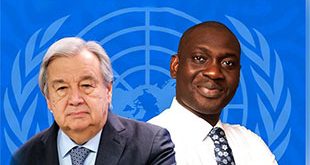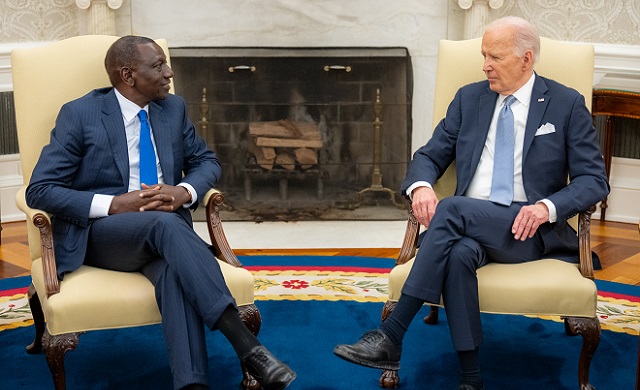
Uganda’s power cut as Kenya, DR Congo, S. Sudan spend more on armies
COVER STORY | IAN KATUSIIME | The Democratic Republic of Congo (DRC) in 2023 recorded the biggest percentage increase in military spending in the world, according to new data from SIPRI, the Sweden-based security think tank. DRC’s spending more than doubled (+105 per cent) to reach $794 million, the SIPRI report released in April noted.
At the same time, South Sudan recorded the second highest percentage increase in military spending globally in 2023. Its spending rose by 78 per cent to reach $1.1 billion. This followed a 108 per cent increase in 2022.
These reports are interesting because Uganda has been involved in joint military operations with armies of both countries either through collaborations to rout rebels or interventions to end conflicts. Now, it appears, the two countries are gearing up to tackle more of the military challenges they face without Uganda’s involvement.
According to SIPRI, DRC’s military spending increase in 2023 coincided with growing tensions with Rwanda, a surge in clashes with non-state armed groups, and a move by the government to strengthen the DRC’s armed forces after it demanded the withdrawal of a large-scale United Nations peacekeeping mission in the country.
DRC hiked its defence budgets to global highs not seen previously. The second largest country in Africa also sought dominion over its eastern territory when it kicked out a regional force with a weak mandate late last year.
Dubbed the East African Community Regional Force (EACRF) comprising troops from Uganda, Kenya, and Burundi, the intervention force had little to show for after a full year of deployment.
The 105 per cent increase in military spending by the giant country in the Great Lakes region is being looked at as a way of shoring up the country’s security to defend its territory. This is happening after tensions with Rwanda have created hawks in Kinshasa.
In December, DRC President Felix Tshisekedi won an election that granted him a second five year term on the back of two years of hawkish posturing. His government’s acquisition of more firepower means countries in the region, especially Rwanda, could witness even more aggressive military posturing from DRC going forward.
On May 4, just days after the report on DRC military spending was released, there was a skirmish on the DRC/Rwanda border that was typical of the clashes between the two countries.
There was a bombing of a displacement camp that claimed nine lives for which DRC accused Rwanda. The U.S. State Department too blamed Rwandan forces and M23, a militia allegedly backed by Rwanda, for the attack—which prompted vigorous denials from Kigali.
Such episodes have been playing out in the last two years with disturbing frequency resulting in a war of words between President Tshisekedi and his Rwandan counterpart Paul Kagame. The instability in eastern DRC, infested by numerous armed groups, has festered for decades. As a result, the DRC army has been rendered ineffectual at best and non-existent at worst. Incidentally, there was a reported coup attempt in Kinshasa on May 19 that was foiled quickly.
Now, in an attempt to build an army to be on the same footing as Rwanda and Uganda, DRC has kicked off an arms race by spending close to $800 million. That is more than what Uganda forked out to pay for fighter jets in 2011—when it was in a similar race with countries like Sudan then under Gen. Omar El Bashir.
According to SIPRI, military spending in 2023 the world over was the steepest year-on-year increase since 2009. From 2022, there was an increase of 6.8 per cent in real terms with total global military expenditure peaking at $2.4trillion.
“The unprecedented rise in military spending is a direct response to the global deterioration in peace and security,” said Nan Tian, Senior Researcher with SIPRI’s Military Expenditure and Arms Production Programme. “States are prioritising military strength but they risk an action–reaction spiral in the increasingly volatile geopolitical and security landscape.”
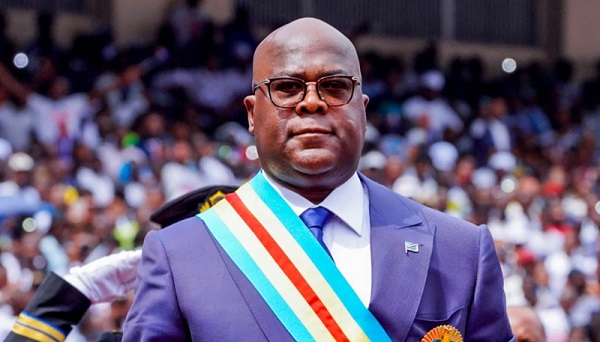
The Great Lakes region has indeed been a volatile area for very long. As the bellicosity between DRC and Rwanda went on, the U.S. dispatched Avril Haines, Director of National Intelligence, to both countries in November 2023 where Haines met with both Tshisekedi and Kagame. The DNI is the head of the US Intelligence Community that oversees eighteen agencies including the Central Intelligence Agency (CIA).
The DNI was joined by Assistant Secretary of State for African Affairs Molly Phee and then Special Assistant to the President and NSC Senior Director for African Affairs Judd Devermont.
“The U.S. government welcomes, and intends to monitor, these DRC and Rwandan steps towards de-escalation, and plans to support diplomatic and intelligence engagements between both countries to foster greater security and prosperity for the Congolese and Rwandan peoples,” an official statement read.
The SIPRI data was compiled before it was announced that Kenya is to receive 16 helicopters and 150 M1117 Armored Security Vehicles from the U.S. That announcement was made recently on May 23 during Kenyan President William Ruto’s state visit to the U.S.
According to a statement released by the White House, the 16 helicopters include eight Hueys to bolster regional peace and security as well as eight MD-500s for enhancing Kenya’s participation in peacekeeping missions.
America has also pledged to deepen counter-terrorism intelligence sharing efforts with Kenya joining Operation Gallant Phoenix, a program facilitating multinational cooperation in sharing terrorist-related information. Kenya Defence Forces will also send candidates to the U.S. Military Academy, the U.S. Naval Academy, and the U.S. Air Force Academy.
Even without the American military bounty, the Kenyan army was already ranked higher than Uganda in terms of firepower according to some estimates. The Global Firepower ranking places Kenya at number 89 out of 145 countries and Uganda at 114 although the site’s data remains widely disputed.
Uganda’s ambitions
Besides being part of the regional force that deployed in DRC in 2022, Uganda had also sent its troops in eastern DRC in 2021 to hunt down the Allied Democratic Forces (ADF) which was held responsible for terrorist attacks in Kampala. Under Operation Shujaa, Uganda Peoples Defence Forces (UPDF) are still in North Kivu, a province in eastern DRC, with an estimated 4000 soldiers in a joint effort with DRC troops.
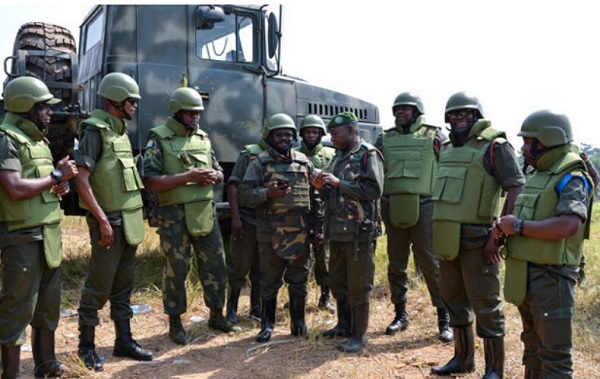
In addition, Uganda has been involved in the mediation efforts of Sudan since the overthrow of Gen Bashir in 2019. The country also hosted an IGAD summit in January attended by one of the belligerents, Gen Mohamed Dagalo, commander of the Rapid Support Forces. Uganda has also been involved in the peace process in South Sudan having brokered the 2018 peace agreement. In 2013, Ugandan troops stormed Juba to restore order after a civil war erupted.
As DRC and South Sudan enter a military build up to guarantee their peace and security, Uganda finds itself in the middle of the matrix. It is bordered by DRC to the west and South Sudan to the north.
The authors of the SIPRI report could not be reached to ascertain whether the upsurge in both countries spending was on weapons like SMGs, tankers, combat aircraft or on personnel or say construction of military bases. However SIPRI data indicated that DRC had acquired light helicopters from the U.S., armoured vehicles from China and artillery from Bulgaria in preceding years.
In the past, Uganda has played an outsized and even controversial role in South Sudan’s acquisition of weapons. In 2018, UK-based Conflict Armament Research, an organisation that monitors weapons supplies in conflict zones, reported that Uganda helped South Sudan acquire weapons and ammunition by providing “end-user assurances” to Bulgaria, Romania and Slovakia, which obscured the fact that the weapons would be resold and diverted to South Sudan.
Some of these weapons included small arms, ammunition, and surveillance aircraft. The report noted that Uganda had also served as a transit country for South Sudan for three attack helicopters imported from Ukraine.
Uganda’s military ambitions have seen its troops deploy in South Sudan and DRC and further afield in Somalia, Central Africa Republic and Equatorial Guinea. Financing for these military operations however is rarely subject to public scrutiny.
The SIPRI report on defence spending came at a time when countries in the EAC are in the thick of the budgeting process. On May 17, the parliament of Uganda passed a Shs72trillion-sized budget for the FY 2024/25 where Shs9trillion (US$2billion) was allocated to ‘Governance and Security’ to bolster national security and law enforcement.
The Shs9trillion vote is a 100% jump from two years ago when Finance Minister Matia Kasaija announced that Uganda would spend Shs3.9 trillion (Approx. $US1 billion) on “improvement of security and security infrastructure.”
Uganda’s budgeting shows that it is firmly in the arms race its neighbours are involved in. The allocation to security in the next financial year is 24% of the budget and it will ensure Uganda has a reasonable chunk of money to match its ambitions in a region where it wants to remain a dominant player as far as security is concerned.
A minority report by Parliament last year provided rare insight into how the bean counters at the Ministry of Finance deal with budgeting and by extension, how the State whisks off money for military operations under classified expenditure.
The report by opposition lawmakers revealed that Uganda had spent Shs16trillion on classified expenditure over an unspecified period of time. In the financial year 2022/2023 when the contract was slated to end, the government had doled out Shs1.9trillion.
MPs noted in the report, “Ironically, in this supplementary schedule for this year a sum of Shs339.8billion was moved from this contractual commitment and allocated to shortfalls in the wages for the UPDF.”
The report delves further into the details. “To our surprise under the budget estimates for FY 2023/24, a sum of Shs1.9trillion (the amount previously allocated to the contractual commitment has been allocated to retooling under classified expenditure without following the retooling guidelines of the Public Finance Management Act (PFMA).”
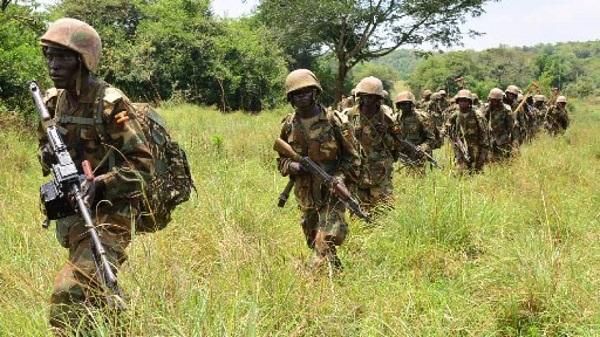
Last year, total classified budgets from State House, Office of the President and Ministry of Defence amounted to Shs2trillion.
MPs Ibrahim Semujju Kira Municipality, Muwanga Kivumbi (Butamabala County), Anne Adeke (Soroti District Woman), Goretti Namugga (Mawogola County) and Lulume Bayiga (Buikwe South) noted in their findings: “We further recommend that the PFMA be amended to redefine the structure of the classified expenditure to limit wastage and abuse of public resources.”
Enter South Sudan
The arms race more than a decade later, has now been joined by South Sudan which seceded from Sudan with Uganda’s urging. The world’s youngest nation opened its chequebooks and splashed a cool $1.1billion to boost its fledgling military amid other factors according to the SIPRI report.
“South Sudan recorded the second highest percentage increase in military spending globally in 2023. Its spending rose by 78 per cent to reach $1.1 billion. This followed a 108 per cent increase in 2022. The growth in spending can be attributed to escalating internal violence and the security challenges that have spilled over from the civil war in neighbouring Sudan.”
South Sudan has struggled to maintain unity since it gained independence in 2011. President Salva Kiir has been fending off rivals for his power; especially his former vice president Riek Machar. Just like DRC, South Sudan has had difficulty in having a unified army with effective control over the state.
In 2022, the country passed out a batch of 20,000 troops which was billed as the first graduation of a national army. In attendance was President Yoweri Museveni who was Chief Guest and a key fixture on the South Sudan radar. However anxiety remains on how long the unified army can hold out.
In the meantime, South Sudan has also attempted to make peace between the warring factions in its northern neighbour, Sudan. South Sudan’s mediation efforts were welcomed by Sudan’s Transitional Sovereign Council in October 2023.
 The Independent Uganda: You get the Truth we Pay the Price
The Independent Uganda: You get the Truth we Pay the Price


